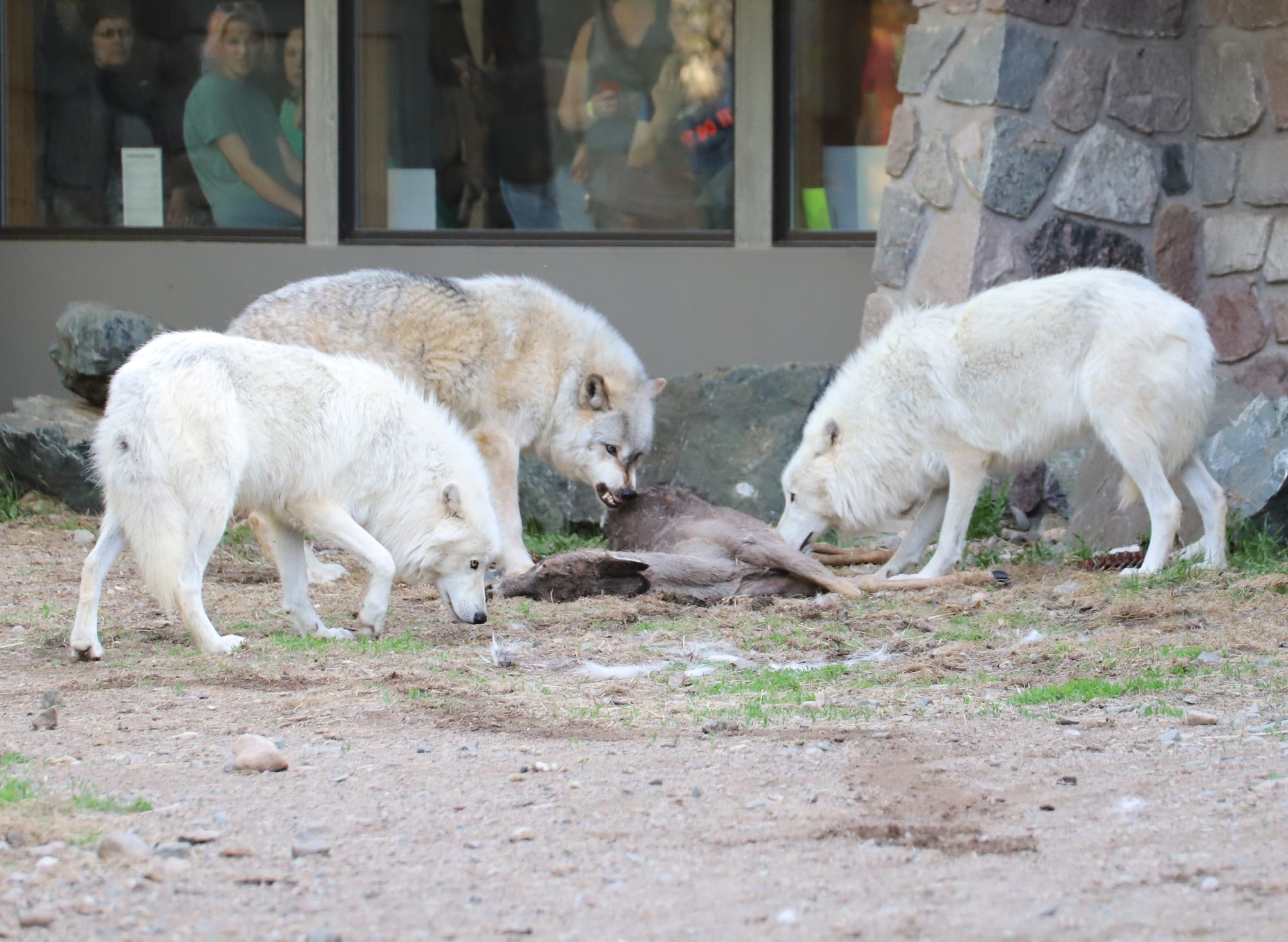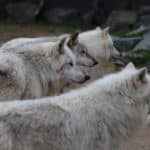Grayson – Tail Tells it All
As you can see by this photo, Aidan is back in the mix, although his confidence is still impacted. He’s less likely to be in a leadership role, but he can still control the carcass. There is a clear difference between Grayson and Axel’s relationship with Aidan and the tail postures in this photo tells it all. Axel on the right side of Aidan, has his tail tucked in what we term a T-4 tail posture (thanks to Wolf Park’s Ethogram for these terms), which is much more of a fear response. Grayson who is approaching Aidan from the left, has his tail in a T=3.5 response, which means, it is relaxed, but touching the haunches in a bit more intimidation. The tolerance shown in the tails is representative of the social bond that is strong between Grayson and Aidan. Grayson is frequently observed resting with Aidan and clearly still has respect for Aidan, even though he displays very few dominant behaviors other than during food possession. Another Grayson behavior is his tendency to howl when there’s a bit of unstable energy in the pack structure. Wolf care always know when there’s been some overnight strife, Grayson does a low-throated, lone howl to the wolf care staff at the gate. Grayson does not d0 well with conflict and definitely seeks out Aidan for comfort. We also had some tree damage in a recent storm, calling in a tree felling service that needed to climb and drop trees to avoid fence damage. Grayson was the only pack member to bark a threat display to the chainsaw operator; that used to be Aidan’s job and before that, Shadow’s job. One of our colleague’s recently commented…”It feels to me that he has been “interning” with Aidan.
We recently reviewed a publication entitled The influence of social relationship on food tolerance, in wolves and dogs. This research was conducted at the Wolf Science Center, in Vienna, Austria and was published in Behavioral Ecology and Sociobiology (2017) 71:107. Authors, Rachel Dale, Friederike Range, Laura Stott , Kurt Kotrschal and Sarah Marshall-Pescini summarized that …”It is logical that animals should choose to co-feed with partners who are most likely to show tolerance, than a less close affiliate, who may challenge you or incite conflict… but it seems that their decision about whether or not to share at all was based on the affiliative relationship, as those with a higher affiliation score were more likely to peacefully share.” This is a pattern we see with the Center’s Exhibit Pack.




